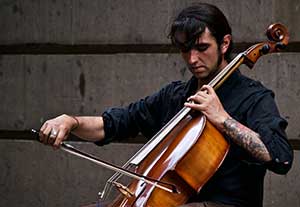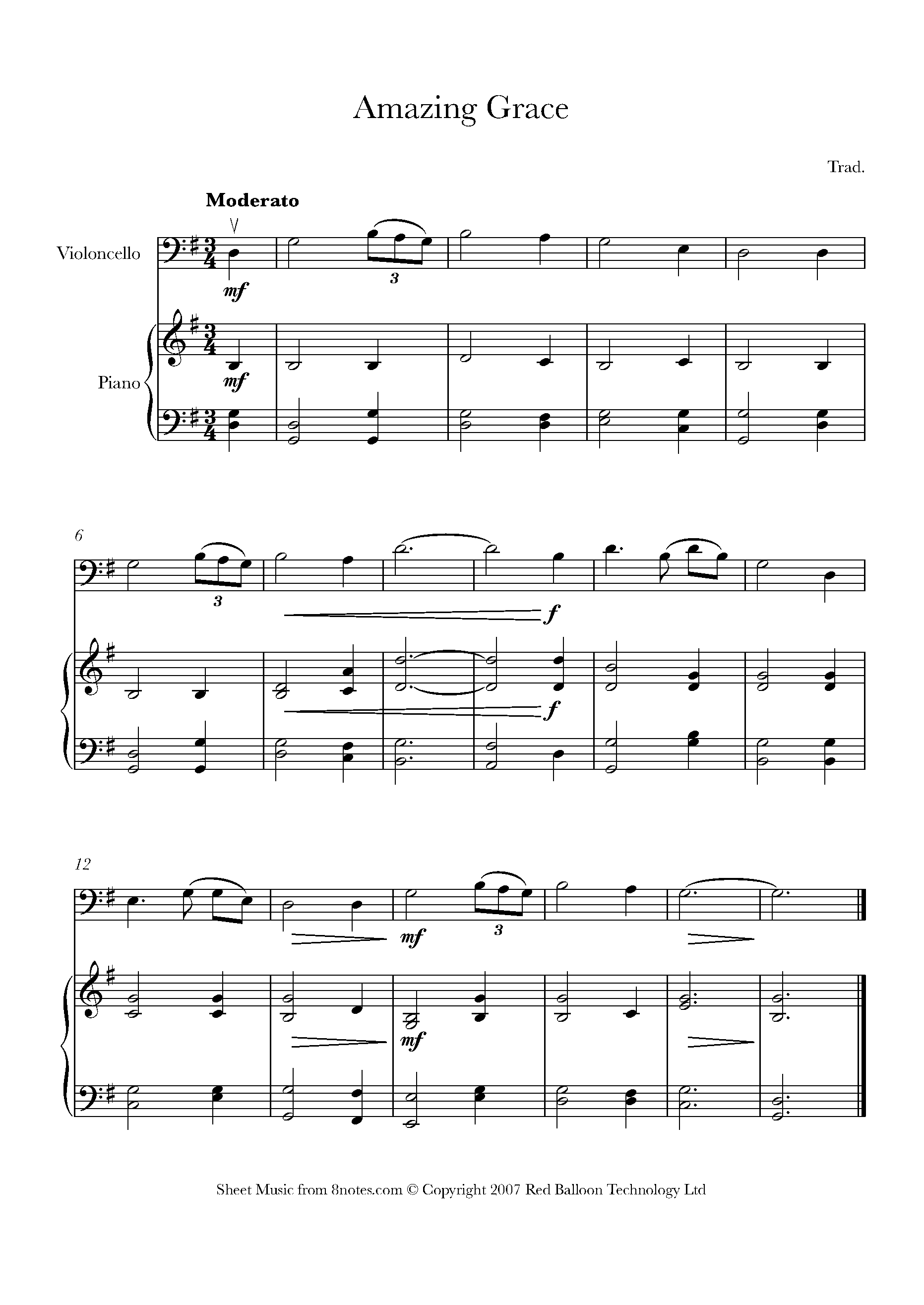4 Cello Tunes to Practise Smooth Bow Changes (legato bowing)
by Christian Morris

Notes that are played together on one bow (slurred) automatically run together smoothly. Cultivating a good legato sound when the bow changes direction requires a lot more practice, however.
This can be practised in two steps, which, once perfected, will take you to an advanced level.
1. In the first stage the aim is to produce a smooth movement in the bowing arm. Hold the bow on the string as if it were just resting there i.e. not pushed down into the string. Now play a series of détaché notes with large gaps between each. The bowing arm should be entirely still at the start, move away smoothly and then come to a complete stop before starting again and moving back in the opposite direction. Concentrate on the making the start of each sound as smooth as possible. The next step is gradually to remove the gap between each note until the notes are joined together - détaché becomes legato.
2. The second stage will help you to refine your legato further. Here we work on the flexibility of the bowing hand. Imagine an upbow moving towards the frog and about to change to a downbow. As the arm changes direction, the fingers and wrist remain flexible and relaxed which allows them to continue to move momentarily in the upbow direction, even as the arm changes direction and starts to play a downbow. It is like the difference between jumping on the ground without bending your legs, which leads to an uncomfortable landing, or doing the same on a trampoline, where the springiness of the surface gradually slows your landing before launching you smoothly back into the air.
Once you have understood these fundamentals, playing the following pieces will help you to refine your technique.
1. Amazing Grace
The tempo of this old hymn can vary a great deal in performance. In order to get the most from your practice, choose the slow accompaniment (see link) and even reduce the tempo further with the slider. Also listen carefully to the video and notice the lack of any 'bump' as the player changes bowing direction. See how closely you can imitate this legato sound.
Amazing Grace
2. Scarborough Fair
There is a greater feeling of movement here, the tempo being one in a bar. This will help to give some momentum to your bowing, but be careful to keep it smooth, especially on those repeated notes (for example, bars 1 and 2) where you hardly need to hear the changes. Be careful not to mix up phrases marks, the notes in which are bowed, and slurs, which are not.
Scarborough Fair
3. Antonin Dvorak : Largo from The New World Symphony
Don't be fooled by how simple this piece look on the page! You will need superb bow control, not to mention stamina and concentration to play it successfully.
Largo from The New World Symphony
4. Antonin Dvorak : Largo from The New World Symphony
This quintessential Irish melody will help you to take your legato bowing to the next level, not so much because it always requires the smoothest legato bowing, but because its ebb and flow gives you the opportunity to mix things up a little bit. You will hear, for example, in the video how the player sometimes bows with a beautiful smooth legato, at other times her bowing becomes a little harder. This is especially apparent as she reaches the highest point in the melody, at bar 14. This sensitivity to context, which in turn allows imaginative variation in the bowing arm is one of the keys to becoming a great cellist.
Largo from The New World Symphony